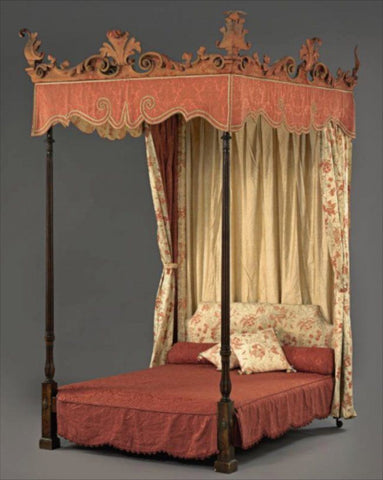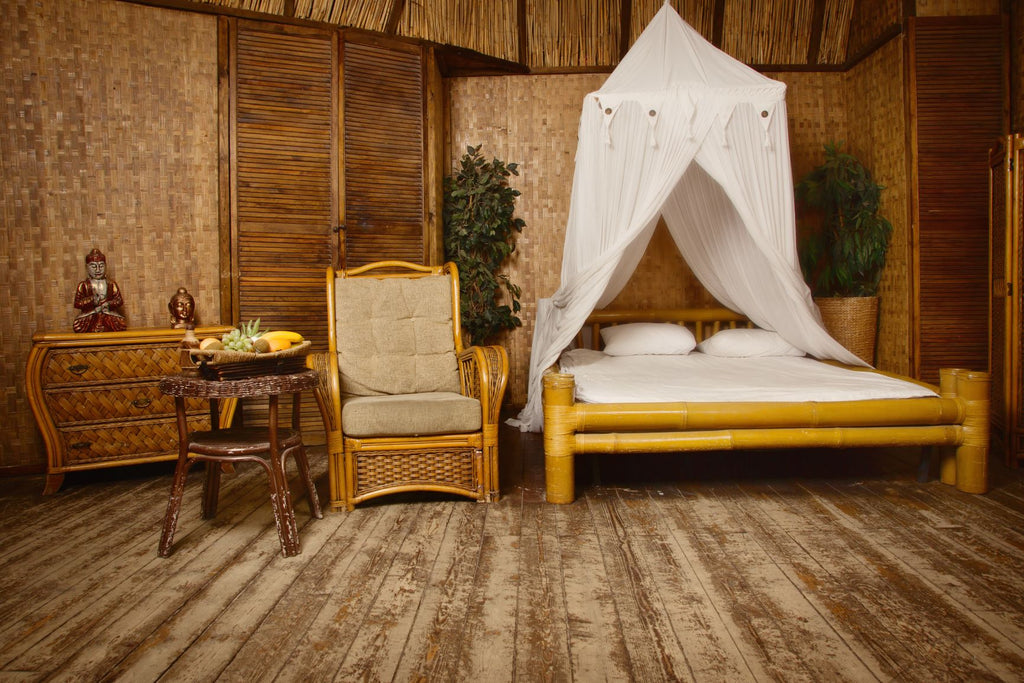Have you ever been tucked into bed, cozy and warm, and wonder, how did your bed become such a magical place to be? The earliest humans did not have this level of comfort, but to them their beds must have felt like a safe haven.
The First Beds
Before fire was invented, the first humans most likely sought refuge in trees and lofty places to be safe from predators while they slept. After fire was invented, they were then able to sleep on the ground. Historical findings have found that the earliest mattresses were made from simple layers of reeds, and other plants. They also used animal coats and fur for warmth and to add a softer layer of bedding.
The Genius of Egypt
Between 3000 and 1000 BCE, Egyptians engineered a raised sleeping surface and the structure of the modern bed. These raised surfaces were made from wood, and protected them from dangers such as snakes and other creepy-crawly creatures. The bed frames of the wealthy were made out of ebony and often lavishly decorated. Their mattresses consisted of wool material and linen bedding. And of course, sheets of Egyptian cotton eventually made its appearance.
Greeks and Romans
The Greeks and Romans also followed suit and designed elaborate raised sleeping structures. They used wood, metal and ivory. Their mattresses were stuffed with either hay and reeds or wool and feathers for the upper class. They also basked in the luxury of many layers of blankets and sheets of varying materials.
The Greeks introduced klines, which were very luxuriously crafted and made from rich materials. These looked like couches with raised headboards and were often adorned with stuffed wool or feather pillows.
Medieval Modesty
In medieval times, simplicity was the word at first. Their beds were made out of wood with stuffed straw mattresses and cotton or wool bedding. In the late 12th century, aristocratic classes sported beds that were much more ornate and down stuffed mattresses became popular. Embroidered mattresses, pillows and bedding were also the norm. It was in this time that the four-poster bed emerged with drapes and curtains attached for privacy or keep pests and bugs out.

Renaissance and the Modern World
The Renaissance was the peak of ornate canopy beds, layers of lush bedding fabrics, down pillows and mattresses and fine linens. While the art of bedding evolved, not everyone reaped the benefits, the poor still slept on the floor or coarsely made bed frames with straw mattresses.
As the 19th century began, designs took a simpler, modern turn and metal frames became more accessible. By the 20th century, beds were being mass-produced. Innerspring mattresses were introduced. Memory foam was developed by NASA in the 1970s. Waterbeds and air beds joined the market.
Beds became much more comfortable, linen and cotton bedding became the norm as well as quilted comforters, sponge pillows and plush blankets. Lower-income households were able to afford these simple comforts.
Even today, the bed continues to evolve, automated beds, heated blankets and alternative synthetic materials are being engineered to suit the comfort needs of modern society.






























